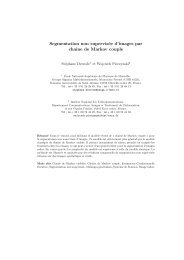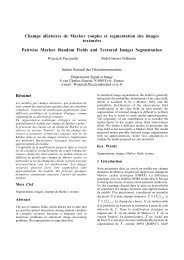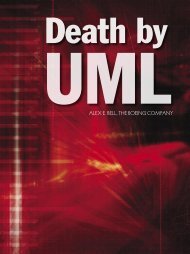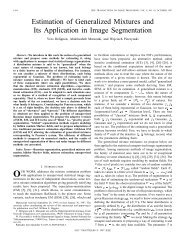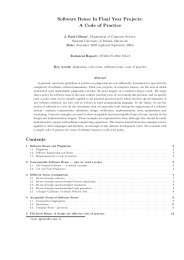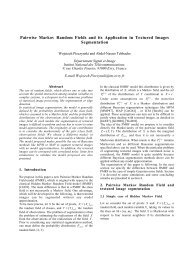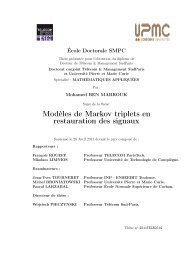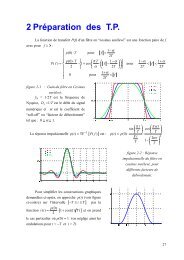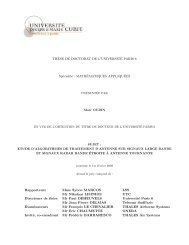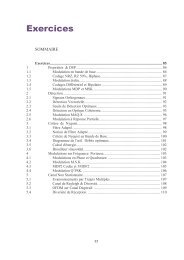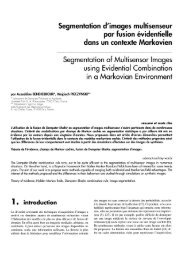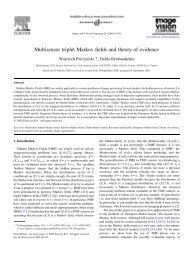HDLC protocol exercises
HDLC protocol exercises
HDLC protocol exercises
Create successful ePaper yourself
Turn your PDF publications into a flip-book with our unique Google optimized e-Paper software.
<strong>HDLC</strong> <strong>protocol</strong> <strong>exercises</strong>1. Loss of information frameFill in the interchange shown in figure 1 after the loss of an information frame sent by A. The window sizevalue is 2, and the two DTEs have no more information frames to send.2. Loss of acknowledgementFill in the interchange of figure 2, where an RR frame is lost due to transmission error. The window size valueis 1, and B has no information frame to send. A has only two information frames to send.3. Retransmission after time-outFill in the interchange of figure 3. The two information frames sent by A are not received by B. B has onlyone information frame to send. The window size value is 2 and the two DTEs have no more informationframes to send.4. Resynchronisation after time-outIn figure 4, the first information frame sent by A is not received by B. The second information frame send byA is emitted just before the timeout of the timer T1. Fill in the interchange and explain how theses conflictscan be solved. The window size value is 2, and the two DTEs have no more information frames to send.5. Analysis of an <strong>HDLC</strong> traceThe figure 5 represents the trace of an <strong>HDLC</strong> interchange collected by a <strong>protocol</strong> analyser This analyser decodes,as much as possible, the frames captured on the physical media. But the analyser cannot make the differencebetween “command” and “response” frames. When a bit pattern can represent either a command or aresponse, the analyser displays the two possible names (e.g. SARM/DM, where SARM is a command, andDM is a response).●●●●Build the chronological schema of the interchange.Find out the incidents which occurred during the communication.Specify the <strong>HDLC</strong> addresses used by the two DTEs, and the nature of the frames (either "command"or "response").Specify the minimum value for the window size.26 November 2009
V(S) V(R) DTE ADTE B V(S) V(R)I 0,0I 1,0I 0,1I 2,1Figure 1: Loss of information frame<strong>HDLC</strong> <strong>protocol</strong> <strong>exercises</strong> 2
V(S) V(R) DTE ADTE B V(S) V(R)I 0,0RR 1Figure 2: Loss of acknowledgement<strong>HDLC</strong> <strong>protocol</strong> <strong>exercises</strong> 3
V(S) V(R) DTE ADTE B V(S) V(R)I 0,0I 1,0I 0,0Figure 3: Retransmission after timeout<strong>HDLC</strong> <strong>protocol</strong> <strong>exercises</strong> 4
DTE ADTE BI 0,0T1I 1,0Figure 4: Resynchronisation after timeout<strong>HDLC</strong> <strong>protocol</strong> <strong>exercises</strong> 5
DTE A → DTE B01 SABM01 I 0,1 “Hello, it’s me”03 REJ 2 P/F01 I 1,3 “Fine.”01 I 2,3 “And you?”01 I 1,4 “Fine.”01 I 2,4 “And you?”01 DISC/RDDTE B → DTE A01 SARM/DM01 UA03 I 0,0 “Hi”03 I 1,1 “Hello”03 I 1,1 P/F “Hello”03 I 2,1 “How are you?”03 I 3,1 “Ciao!”01 REJ 101 RR 301 UAFigure 5: Analysis of an <strong>HDLC</strong> trace<strong>HDLC</strong> <strong>protocol</strong> <strong>exercises</strong> 6



